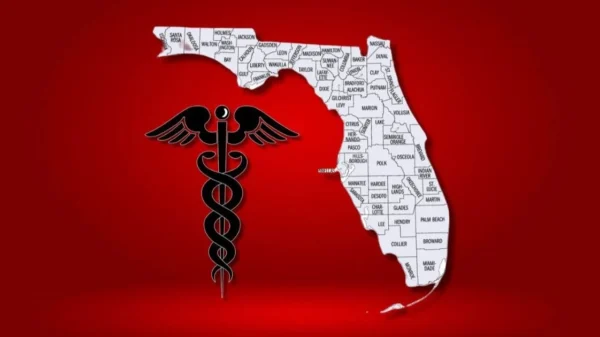I recently became a principal partner in a new group called All Things Florida Consulting. Our initial efforts got me thinking about how Florida has changed over recent decades and the effects of how the state is one of the freest and most entrepreneurial places to do business. Staring with this column, I will do a series that spotlights various industries in our great state and what they mean to us all and our greater economy.
My focus today is on the 15 ports within Florida. Teddy Roosevelt had the drive to push the completion of the Panama Canal more than a century ago after others had struggled before and failed. Who could predict the future effects upon Florida at that time when Key West was the largest city in the southern state with the smallest population? Now that the canal has been expanded, the benefits to Florida have multiplied.
We have all seen videos of ships aligned in rows off the California coast, laden with cargo from Asia, all at a time of critical supply chain problems in our economy during the era of COVID. During this period, Florida’s ports have had capacities and have been expanding, creating even more capacities. With the canal widening, ships from Pacific countries have a quicker route to the U.S. East Coast. Florida is geographically well placed to be a gateway to the U.S. and the rest of the Americas. The Florida Ports Council and Gov. Ron DeSantis have been pushing to the world’s exporting countries that “Florida ports are open for business.” This message is resonating. These changes will allow Florida to plan for a long-lasting trade realignment, creating new industries, inland ports and logistics efforts, and the many jobs that follow.
Planning ahead and taking advantage of the U.S. West Coast logjam and union and regulation issues allow Florida’s 15 ports to advance the state’s brand worldwide. More and larger ships add increased vigor to our fast-growing economy. Florida is thriving while much of the country remains static.
How big a difference do these changes make? According to the Florida Ports Council, cargo going through Florida ports was up 75 percent in 2021 over pre-COVID years. Cargo handled has grown from 111.8 million tons in 2019 to 195.5 million tons in 2021. While the cruise industry, also an essential part of the state’s economy, has yet to fully recover from COVID closures and limitations, the signs there are also very positive, with departing ships moving more towards total capacity. We have seen increased federal and state investments in Florida port infrastructures, making the future even brighter for passenger and cargo capacities.
All of this matters. Consider the thousands of well-paying jobs being created. Consider the many manufacturers and retail companies who service and supply all these vessels. Consider the boost to the overall Florida economy; not only directly from the ports but in added construction, inland port expansions, transportation, and the multitude of visitors who not only depart on cruise ships but also add time to their vacations visiting our beautiful state.
Florida will continue to grow. This growth will expand the need for a diversity of industries and occupations to serve the demands of more than 22 million residents and the increasing number of visitors each year. Florida is on the move, setting a great example of how a low tax, low regulation, business-oriented state can positively affect the world economy. The $117.6 billion in economic impact from what passes through our 15 Florida ports adds tremendous value to us both now and in building a better tomorrow.
 Dr. Ed Moore served for many years as the president of the Independent Colleges and Universities of Florida (ICUF) and has served in both the legislative and executive branches of Florida government. Prior to ICUF, Dr. Moore was staff director for policy, for Worker’s Compensation, for Medical Liability and for Public Safety and Security in the Florida House of Representatives. He also worked in the private sector for 21 years.
Dr. Ed Moore served for many years as the president of the Independent Colleges and Universities of Florida (ICUF) and has served in both the legislative and executive branches of Florida government. Prior to ICUF, Dr. Moore was staff director for policy, for Worker’s Compensation, for Medical Liability and for Public Safety and Security in the Florida House of Representatives. He also worked in the private sector for 21 years.


















